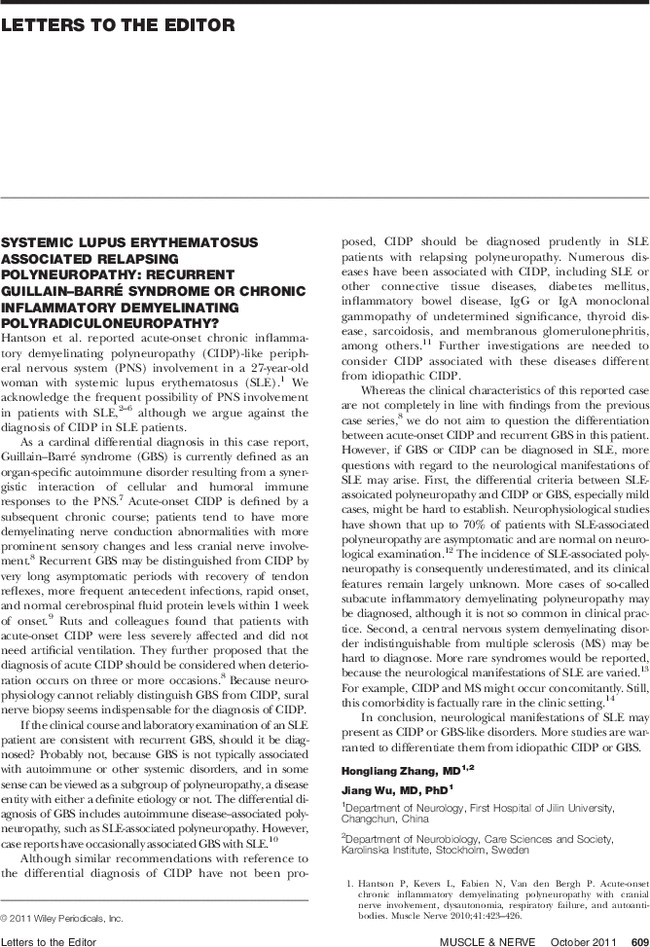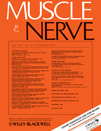A novel GJB1 mutation in an Italian patient with Charcot–Marie–Tooth disease and pyramidal signs
Marco Luigetti MD
Institute of Neurology, Catholic University of Sacred Heart Rome, Italy
Search for more papers by this authorGian Maria Fabrizi MD
Department of Neurological, Neuropsychological Morphological and Movement Sciences, University of Verona Verona, Italy
Search for more papers by this authorFederico Ranieri MD
Institute of Neurology, Catholic University of Sacred Heart Rome, Italy
Search for more papers by this authorFederica Taioli PhD
Department of Neurological, Neuropsychological Morphological and Movement Sciences, University of Verona Verona, Italy
Search for more papers by this authorAmelia Conte MD
Institute of Neurology, Catholic University of Sacred Heart Rome, Italy
Search for more papers by this authorAlessandra Del Grande MD
Institute of Neurology, Catholic University of Sacred Heart Rome, Italy
Search for more papers by this authorMario Sabatelli MD
Institute of Neurology, Catholic University of Sacred Heart Rome, Italy
Search for more papers by this authorMarco Luigetti MD
Institute of Neurology, Catholic University of Sacred Heart Rome, Italy
Search for more papers by this authorGian Maria Fabrizi MD
Department of Neurological, Neuropsychological Morphological and Movement Sciences, University of Verona Verona, Italy
Search for more papers by this authorFederico Ranieri MD
Institute of Neurology, Catholic University of Sacred Heart Rome, Italy
Search for more papers by this authorFederica Taioli PhD
Department of Neurological, Neuropsychological Morphological and Movement Sciences, University of Verona Verona, Italy
Search for more papers by this authorAmelia Conte MD
Institute of Neurology, Catholic University of Sacred Heart Rome, Italy
Search for more papers by this authorAlessandra Del Grande MD
Institute of Neurology, Catholic University of Sacred Heart Rome, Italy
Search for more papers by this authorMario Sabatelli MD
Institute of Neurology, Catholic University of Sacred Heart Rome, Italy
Search for more papers by this author
References
- 1
Ionasescu V,
Ionasescu R,
Searby C.
Correlation between connexin 32 gene mutations and clinical phenotype in X-linked dominant Charcot–Marie–Tooth neuropathy.
Am J Med Genet
1996;
63:
486–491.
10.1002/(SICI)1096-8628(19960614)63:3<486::AID-AJMG14>3.0.CO;2-I PubMed Web of Science® Google Scholar
- 2 Dubourg O, Tardieu S, Birouk N, Gouider R, Léger JM, Maisonobe T, et al. Clinical, electrophysiological and molecular genetic characteristic of 93 patients with X-linked CMT disease. Brain 2001; 24: 1958–1967.
- 3 Reilly MM, Shy ME. Diagnosis and new treatments in genetic neuropathies. J Neurol Neurosurg Psychiatry 2009; 80: 1304–1314.
- 4 Taylor RA, Simon EM, Marks HG, Scherer SS. The CNS phenotype of X-linked CMT disease. Neurology 2003; 61: 1475–1478.
- 5 Menichella DM, Goodenough DA, Sirkowski E, Scherer SS, Paul DL. Connexins are critical for normal myelination in the CNS. J Neurosci 2003; 13: 5963–5973.
- 6 Hanemann CO, Bergmann C, Senderek J, Zerres K, Sperfeld AD. Transient, recurrent, white matter lesions in X-linked CMT disease with novel connexin 32 mutation. Arch Neurol 2003; 60: 605–609.
- 7 Takashima H, Nakagawa M, Umehara F, Hirata K, Suehara M, Mayumi H, et al. GJB1 mutations and central nervous system in X-linked CMT disease. Acta Neurol Scand 2003; 107: 31–37.
- 8 Di Lazzaro V, Pilato F, Oliviero A, Saturno E, Dileone M, Tonali PA. Role of motor evoked potentials in diagnosis of cauda equina and lumbosacral cord lesions. Neurology 2004; 63: 2266–2271.




